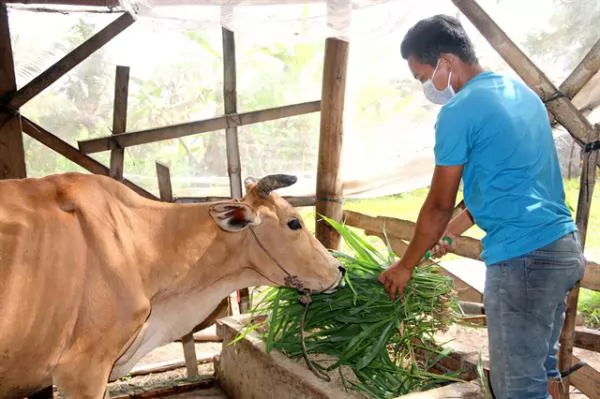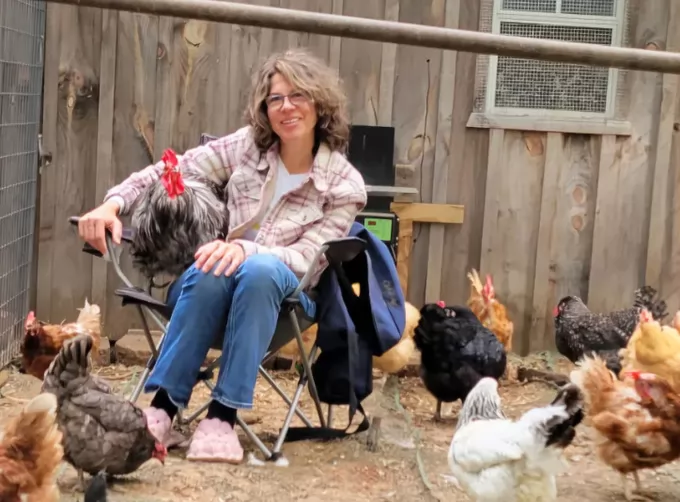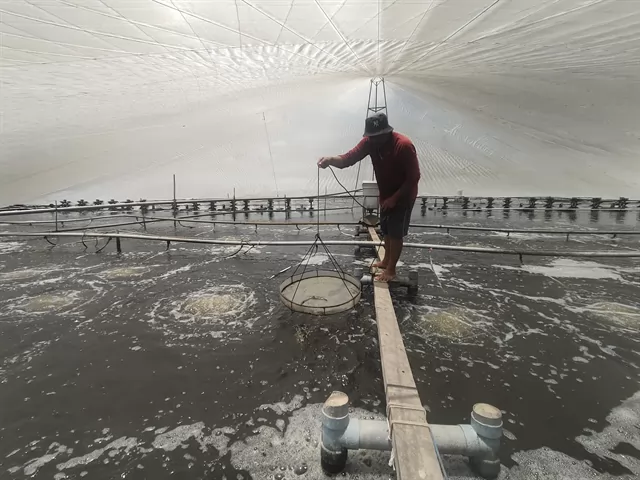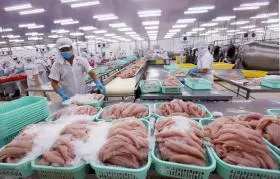Trà Vinh improves lives of its ethnic Khmer

Farmer Thạch Nhựt in Trà Vinh Province's Châu Thành District feeds his cow. He escaped poverty through the province's support policies for ethnic Khmer people. — VNA/VNS Photo Thanh Hoà
TRÀ VINH — Trà Vinh Province’s support policies for ethnic people have helped improve the lives of its Khmer people and reduced their poverty rate.
The Cửu Long (Mekong) Delta province has the second largest number of Khmers – more than 300,000 – in the delta after neighbouring Sóc Trăng, and they account for almost a third of its population.
In recent years its support policies include increased infrastructure construction in areas predominated by the Khmer, helping improve their lives.
It spent more than VNĐ2.1 trillion (US$921 million) in 2016-20 on building roads, irrigation works, power supply systems, schools, and healthcare and other infrastructure.
It also carried out nearly 600 projects using funds donated by foreign governments and non-governmental organisations.
In Châu Thành District, nearly 80 per cent of the population of Đa Lộc Commune is Khmer, and people’s lives have improved significantly since the commune was recognised last year as a new-style rural area.
The commune’s roads have been paved and have greatly improved transportation.
Since most Khmer people in the commune live off farming, to improve their income local authorities have speeded up agricultural restructuring and are training farmers in advanced farming techniques.
They have fostered links between farmers and companies to ensure outlets for agricultural produce.
The commune now has only 28 poor Khmer households, down 78 from 2020.
Đa Lộc used to be an extremely disadvantaged commune, and was added to the Government’s Programme 135, which aims to improve living conditions in poor communes, focusing on production, infrastructure, human resource training, and services.
Phạm Văn Kiệt, chairman of the Đa Lộc People’s Committee, said: “Khmer people in the commune have access to many support policies related to housing, farmlands, soft loans, electricity, and water supply.”
“Most Khmer households who did not have housing or farming lands have been provided lands and have escaped poverty.”
More than 3,000 have received the lands, 3,600 have received support for building houses, 3,300 have got jobs, and 15,000 have received soft loans to undertake farming or do business.
In 2022-30 the province will undertake 10 projects costing a total of VNĐ1.5 trillion ($65.7 million) to help ethnic people improve their living standards under the national target programme on socio-economic development in ethnic minority and mountainous areas.
The projects, funded by central and local budgets, will include providing housing and farming lands and supplying water to ethnic people, and building infrastructure.
They will also zone residential areas, provide education and training, preserve traditional cultures in combination with offering tourism services, provide healthcare services, and implement programmes related to gender equality, women and children.
The province plans to ensure ethnic people have an average per capita income of VNĐ80 million ($3,500) by 2025. — VNS
Maybe you are interested

Eggcellent alternative: High egg prices causing people to rent and raise their own chickens
The cost of eggs is only getting higher in grocery stores and on menus in restaurants around the country.

Digital technology and innovation help change food system: experts
HÀ NỘI — Digital technology and innovation play an important role in increasing production efficiency, productivity, food safety and distribution, as well as in connecting producers with consumers, according to Deputy Prime Minister Phạm Bình Minh.

Bến Tre Province farmers adopt innovative techniques for high-tech shrimp farming
Farmers in Bến Tre Province are increasingly switching to high-tech shrimp breeding, adopting more innovative techniques to boost productivity, reduce costs and increase incomes.





